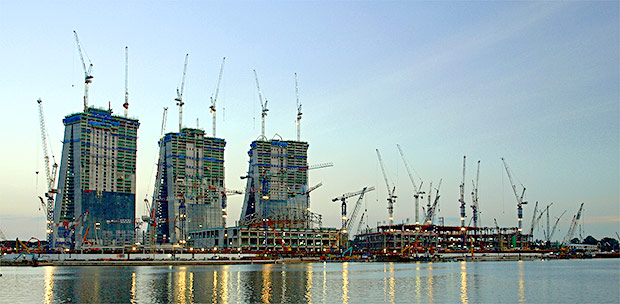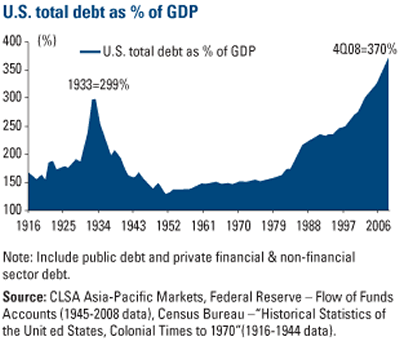Investment Opportunities in Asia Abound
Stock-Markets / Asian Economies May 26, 2009 - 02:41 PM GMTBy: Frank_Holmes
 I spent last week in Asia at the Corporate Access Forum in Singapore sponsored by CLSA Asia-Pacific Markets, which produces some of the most detailed and insightful investment research available.
I spent last week in Asia at the Corporate Access Forum in Singapore sponsored by CLSA Asia-Pacific Markets, which produces some of the most detailed and insightful investment research available.
This was a great opportunity to meet with senior management of many of the leading corporations in Asia. This kind of high-level access is always valuable for investors, but especially so this year as China, India, South Korea and other countries in the region position themselves for recovery and the next growth burst.
Despite this year’s slowdown, U.S. Global Investors continues to believe strongly in the Asia story. Rapid urbanization, an expanding middle class and government policies that promote prosperity are among the factors that we see as driving future growth in that region.
China’s spending to build out its infrastructure has gotten a lot of attention, but that emphasis is a key government initiative in many Asian countries. Construction cranes are a common sight in Singapore, where the government has committed to spending more than $40 billion over the next three years on new roads, public housing and other infrastructure projects.

Construction of the Marina Bay Sands casino in Singapore
One of the biggest projects now under way in Singapore is the Marina Bay Sands hotel and casino, which I could see from my hotel window. Look at all of the cranes in the image above. This will be the country’s first casino following a change in its gambling laws last year, and its first step toward its goal of becoming the Monte Carlo of Southeast Asia.
This construction, which is valued at more than $3.5 billion, is providing jobs for thousands of workers and consuming many thousands of tons of steel, cement and other commodities. Similar work is under way across Asia, and many more projects are in the pipeline.
The conference in Singapore also featured presentations by CLSA strategists and economists looking at the broader economic outlook for 2009 and 2010. Here are some of the interesting points made in those presentations:

- The total U.S. debt (public and private) was 370 percent of GDP at the end of the fourth quarter of 2008. That’s up roughly 50 percent in the past decade and, of course, this does not take into account the $1 trillion-plus in economic stimulus under President Obama.
- Nominal personal consumption growth in the U.S. is negative and at its lowest in nearly 50 years on a year-over-year basis. This is part of the deflationary trend under way, along with the deleveraging in the financial sector over the past five quarters.
- While emerging Asia (ex-Japan) remains heavily reliant on exports, it is consuming an increasing amount of its own production. In 2001, private consumption in emerging Asia was 25 percent of the U.S. level. In 2008, it was 38 percent. In CLSA’s view, when this consumption level hits 50 percent, you will begin to see an economic decoupling between emerging Asia and the West.
- CLSA’s respected Asia strategist Chris Wood came out with country weightings for the Asia Pacific region compared to the MSCI Asia ex-Japan index. He recommended that investors overweight India, China, Hong Kong and Taiwan and that they strongly underweight Australia (12 percent vs. 26 percent in the MSCI index) due to housing and financial issues.
- CLSA forecasts that China’s economy will grow 7 percent this year and 8 percent next year (9 percent in 2008), and that India will grow 4.6 percent this year and 6.4 percent in 2010 (6.3 percent in 2008). Major shrinkage is predicted elsewhere in the region in 2009: Taiwan -10.8 percent, Singapore -10 percent, Thailand -9 percent, Hong Kong -6.8 percent, South Korea -6.8 percent and Japan -5.5 percent.
- The key macro driver for India is the collapse of oil prices from last year’s highs. This functions like a huge tax break and, along with monetary easing by the Delhi government and underleveraged consumers, bodes well going forward.
Frank Holmes is CEO and chief investment officer at U.S. Global Investors , a Texas-based investment adviser that specializes in natural resources, emerging markets and global infrastructure. The company's 13 mutual funds include the Global Resources Fund (PSPFX) , Gold and Precious Metals Fund (USERX) and Global MegaTrends Fund (MEGAX) .
More timely commentary from Frank Holmes is available in his investment blog, “Frank Talk”: www.usfunds.com/franktalk .
Please consider carefully the fund's investment objectives, risks, charges and expenses. For this and other important information, obtain a fund prospectus by visiting www.usfunds.com or by calling 1-800-US-FUNDS (1-800-873-8637). Read it carefully before investing. Distributed by U.S. Global Brokerage, Inc.
All opinions expressed and data provided are subject to change without notice. Some of these opinions may not be appropriate to every investor. Gold funds may be susceptible to adverse economic, political or regulatory developments due to concentrating in a single theme. The price of gold is subject to substantial price fluctuations over short periods of time and may be affected by unpredicted international monetary and political policies. We suggest investing no more than 5% to 10% of your portfolio in gold or gold stocks. The following securities mentioned in the article were held by one or more of U.S. Global Investors family of funds as of 12-31-07 : streetTRACKS Gold Trust.
Frank Holmes Archive |
© 2005-2022 http://www.MarketOracle.co.uk - The Market Oracle is a FREE Daily Financial Markets Analysis & Forecasting online publication.



